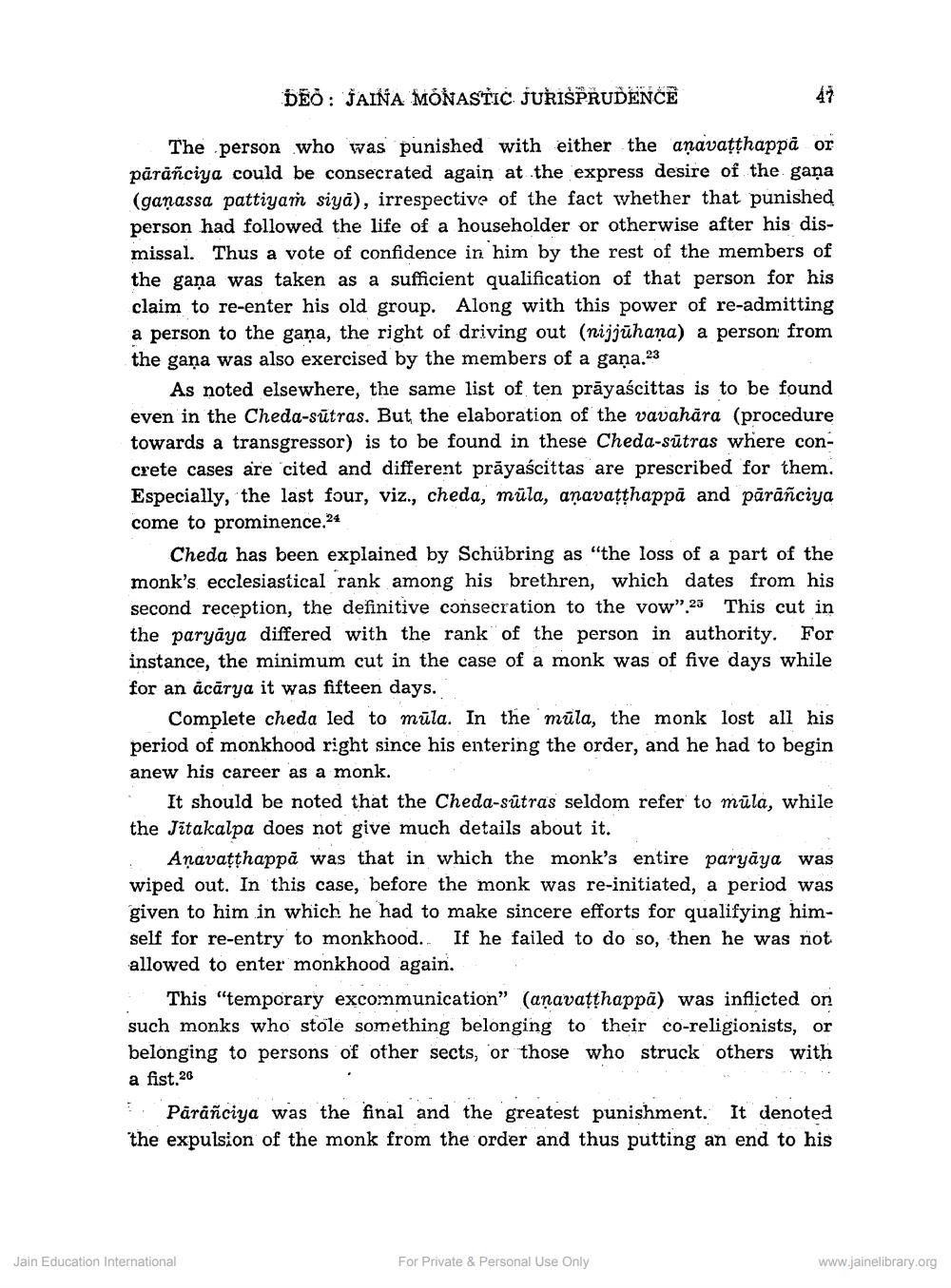Book Title: Some Aspects of Jaina Monastic Jurisprudence Author(s): S B Deo Publisher: Z_Vijay_Vallabh_suri_Smarak_Granth_012060.pdf View full book textPage 7
________________ DEO: JAINA MONASTIC JURISPRUDENCE The person who was punished with either the anavatthappă or pārāñciya could be consecrated again at the express desire of the gaña (ganassa pattiyan siya), irrespective of the fact whether that punished person had followed the life of a householder or otherwise after his dismissal. Thus a vote of confidence in him by the rest of the members of the gaṇa was taken as a sufficient qualification of that person for his claim to re-enter his old group. Along with this power of re-admitting a person to the gana, the right of driving out (nijjūhana) a person from the gaña was also exercised by the members of a gaņa.23 As noted elsewhere, the same list of ten prāyaścittas is to be found even in the Cheda-sūtras. But the elaboration of the vavahära (procedure towards a transgressor) is to be found in these Cheda-sūtras where concrete cases are cited and different prāyaścittas are prescribed for them. Especially, the last four, viz., cheda, müla, aṇavatthappa and pārāñciya come to prominence.24 Cheda has been explained by Schübring as "the loss of a part of the monk's ecclesiastical rank among his brethren, which dates from his second reception, the definitive consecration to the vow".25 This cut in the paryāya differed with the rank of the person in authority. For instance, the minimum cut in the case of a monk was of five days while for an acārya it was fifteen days. Complete cheda led to mūla. In the mūla, the monk lost all his period of monkhood right since his entering the order, and he had to begin anew his career as a monk. . It should be noted that the Cheda-sútras seldom refer to mūla, while the Jitakalpa does not give much details about it. : Anavatthappă was that in which the monk's entire paryaya was wiped out. In this case, before the monk was re-initiated, a period was given to him in which he had to make sincere efforts for qualifying himself for re-entry to monkhood. If he failed to do so, then he was not allowed to enter monkhood again. This "temporary excommunication" (anavatthappa) was inflicted on such monks who stole something belonging to their co-religionists, or belonging to persons of other sects, or those who struck others with a fist.26 5. Parañciya was the final and the greatest punishment. It denoted the expulsion of the monk from the order and thus putting an end to his Jain Education International For Private & Personal Use Only www.jainelibrary.orgPage Navigation
1 ... 5 6 7 8 9 10 11 12 13 14
